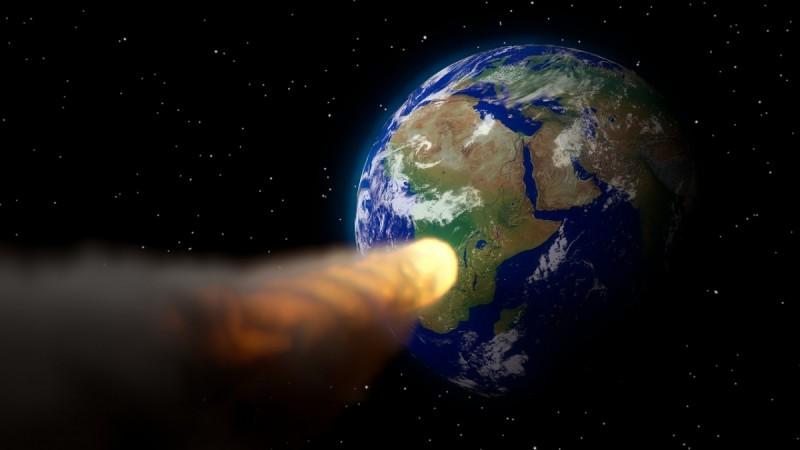
The asteroid that hit Earth 65 million years ago did more than just wipe out the entire species of dinosaurs. The impact also kicked off an instant spell of global warming by releasing a massive amount of carbon dioxide into the atmosphere.
It increased the temperature on Earth by 5 degrees, and lasted for about 100,000 years.
Findings from a newly published study goes to show the dangers of burning fossil fuels and polluting the atmosphere with carbon dioxide. It paints a harsh picture of the kind of reaction it could have on the climate of the planet, reports the NPR.
Scientists working on the project were specifically looking at the environmental impact that the Chicxulub impact had on Earth.
The event occurred about 65 million years ago when a massive asteroid, said to measure over 8 km wide, struck the Yucatan Peninsula in what is now southern Mexico. The impact created a heat wave so intense that it melted rocks nearby and set off wildfires that stretched across continents.
What followed was one of the most severe mass extinction events in the history of the planet. Soot and ash filled the atmosphere, blocking out sunlight from hitting the ground for years on end, setting off a global winter that caused the death of land dwelling dinosaurs, even wiping out scores of plant and other land animal species.
Once the skies eventually cleared, the atmosphere, now rich in carbon dioxide, must have warmed up the atmosphere. Scientists however, have had a hard time discerning the exact environmental effects that the dinosaur killer had on the planet.
"To date, there's really been no good empirical estimates on what temperature is doing following the impact, in terms of hundreds of thousands of years," says Page Quinton, a geologist at the State University of New York at Potsdam.
One way to find out would be to look for oxygen isotope signatures - a recorder of temperature in the past, notes the report. Researchers started to look for these signatures in microscopic fossils of fish that lived during that time. The samples are really small, like grains of sand, "But under the microscope, they are unequivocally fish fossils. They're these millimeter or half-millimeter long little teeth, and under the microscope they are gorgeous," says MacLeod.
The team chose a site in Tunisia which has well-preserved rock that show layers of rock stretching from before the asteroid impact, during, and afterwards. It is almost like neatly filed section of rock arranged by date.
"We basically have to go very carefully looking at layer by layer until we find a very characteristic layer that is red in color. It is at most a centimeter thick," said Julio Sepulveda, a geologist at the University of Colorado, Boulder. "That contains all the material that came from the impact itself, from the body that impacted our planet. It's kind of reddish in color, because of the metals that are present."
Rocks from several feet below as well as above the layers were collected as samples to study what they had preserved. In these samples, scientists found that there was a long period of stable temperatures before the asteroid impact after which temperatures quickly rose and remained 5 degrees hotter for about 100,000 years after that.
"The atmosphere was loaded for a very brief interval of time, and the consequences of that change in atmospheric composition lasted for 100,000 years," MacLeod says. "So it illustrates, I think, really strongly, even if we went back to 1850 levels of carbon dioxide emission, it's going to take a 100,000 years for the carbon dioxide that we've already put in the atmosphere to cycle through the Earth's systems."
The study was first published in the journal Science.














